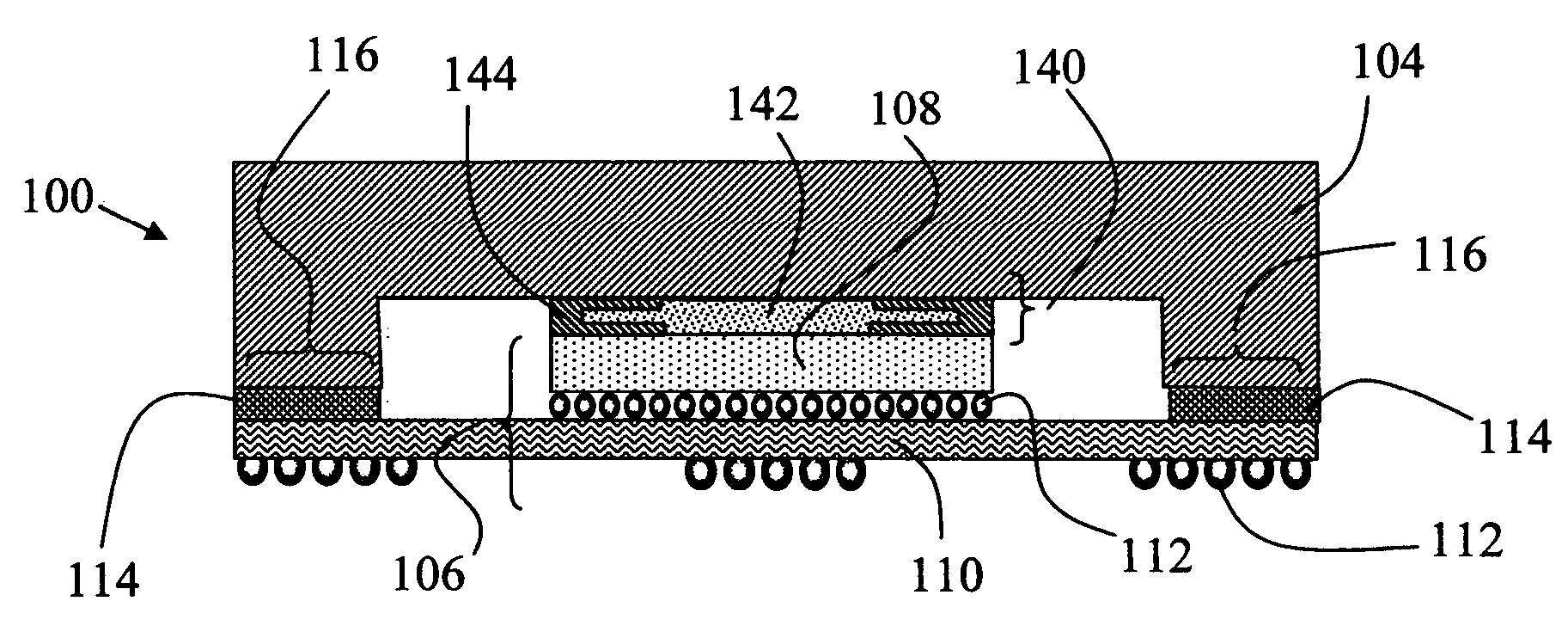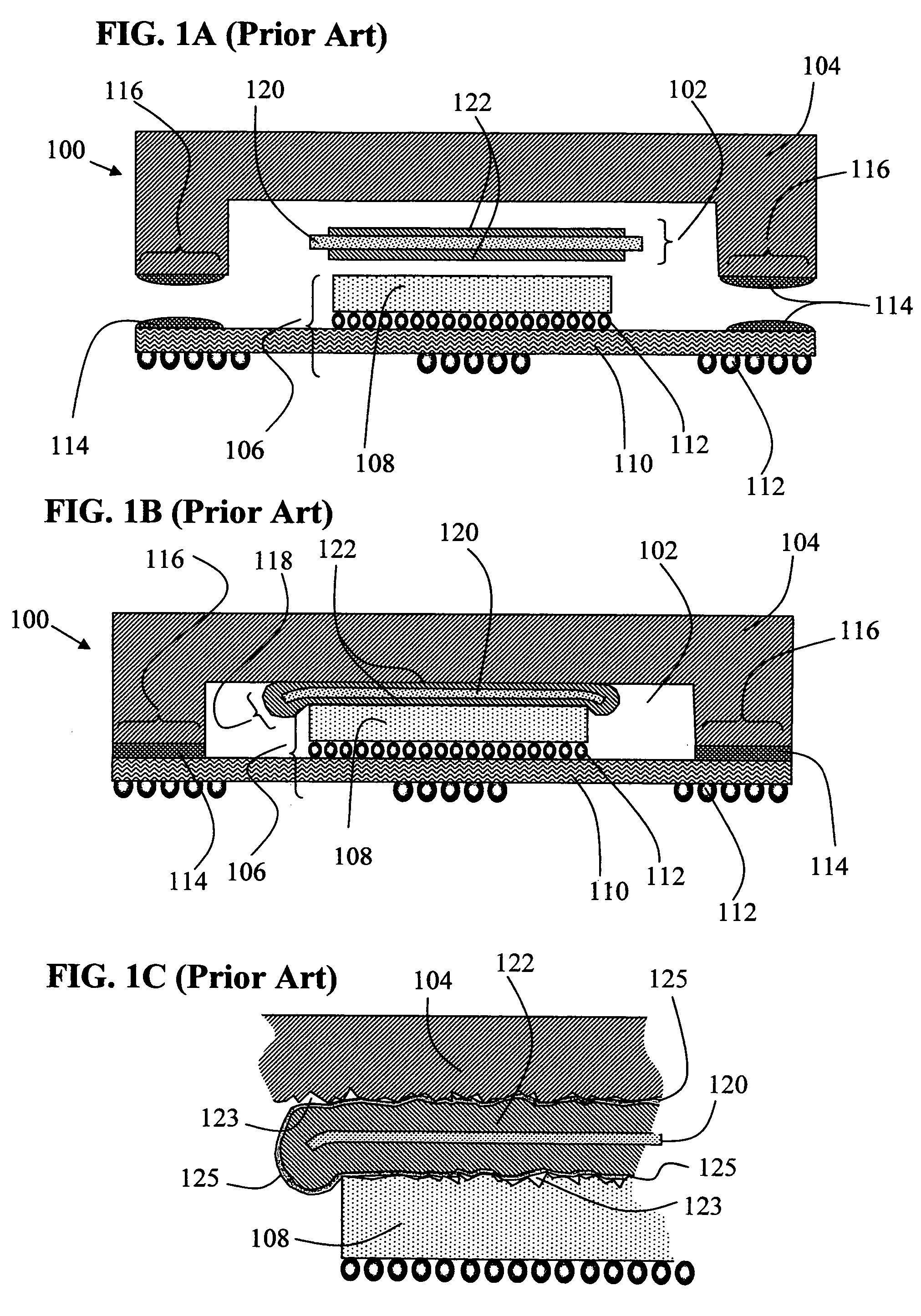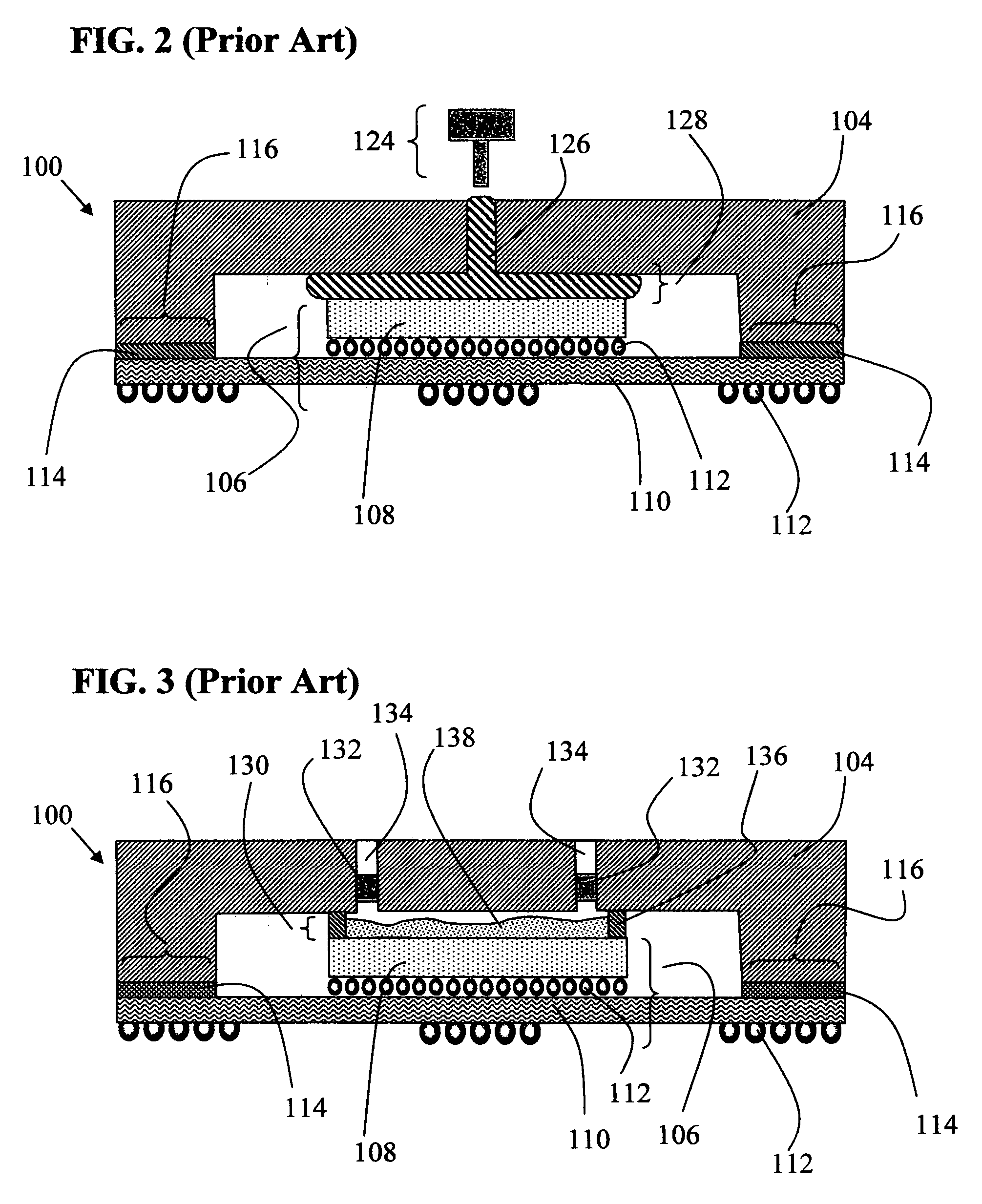Liquid metal thermal interface material system
a thermal interface material and liquid metal technology, applied in the direction of semiconductor devices, semiconductor/solid-state device details, electrical devices, etc., can solve the problems of reducing performance and reliability, and affecting the effect of thermal energy transfer
- Summary
- Abstract
- Description
- Claims
- Application Information
AI Technical Summary
Benefits of technology
Problems solved by technology
Method used
Image
Examples
embodiment 147
[0073]FIG. 11, similar to FIG. 10B, illustrates another thermal interface structure embodiment 147 wherein the metallic core 154 and coating layer 144 extends a distance from the outer perimeter of the metallic seal member 142, thereby forming a boundary region 152 which facilitates bonding of the individual coating layers as well as adhesive attachment to a variety of heat exchangers.
[0074] As seen in FIG. 12, a thermal interface structure 149 (similar to FIG. 11) is illustrated wherein the solid metallic core 154 includes a diffusion barrier layer 156 and wetting layer 158 (over the diffusion barrier layer). In one embodiment of the present invention, the metallic interface composition (comprising the metallic seal member 142) is applied to the solid metallic core 154 prior to melting of the metallic seal member 142 in order to further facilitate wetting and flowing of the metallic interface composition on the core 154.
[0075] Now, within FIG. 13, metallic interface composition “i...
embodiment 153
[0079] As seen in FIG. 15, another thermal interface structure embodiment 153 of the present invention, a boundary region 152, located outside of the outer perimeter of the metallic seal (illustrated as the space 146), includes an adhesive layer 166 which facilitates attachment of the interface structure 140 to the heat exchanger (lid 104).
[0080]FIG. 16 illustrates an electronic assembly 170 including an electronic component 106 (comprised of an IC chip 108, package substrate 110, and electrical interconnection vias 112), heat exchanger (heat sink) 168, and thermal interface structure 172. The thermal interface structure 172 includes a metallic seal member (comprised of a metallic interface composition), illustrated as the space 146, coating layer 144, and facilitates a thermal path between the IC chip 108 and heat sink 168. As another embodiment of FIGS. 4A through 4D, FIG. 16 illustrates the thermal interface structure 172 after the metallic seal member has melted and flowed into ...
PUM
| Property | Measurement | Unit |
|---|---|---|
| metallic | aaaaa | aaaaa |
| perimeter | aaaaa | aaaaa |
| conductivity | aaaaa | aaaaa |
Abstract
Description
Claims
Application Information
 Login to View More
Login to View More - R&D
- Intellectual Property
- Life Sciences
- Materials
- Tech Scout
- Unparalleled Data Quality
- Higher Quality Content
- 60% Fewer Hallucinations
Browse by: Latest US Patents, China's latest patents, Technical Efficacy Thesaurus, Application Domain, Technology Topic, Popular Technical Reports.
© 2025 PatSnap. All rights reserved.Legal|Privacy policy|Modern Slavery Act Transparency Statement|Sitemap|About US| Contact US: help@patsnap.com



